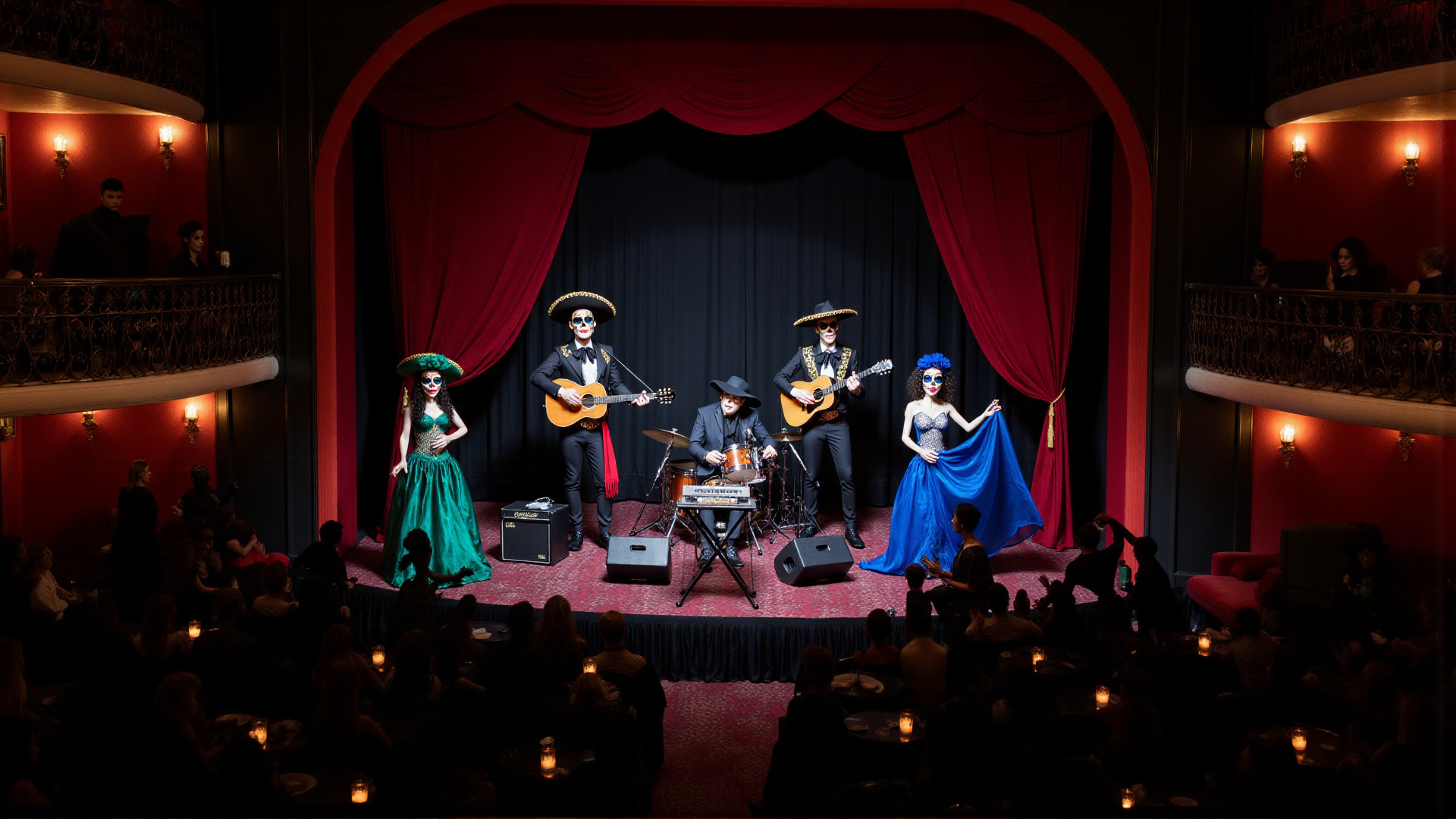
Move Your Bones: Reimagining Music Video Production with AI
— Written by Adam Eli Bernhardt
Isaac Irvin had been carrying an idea for years — a music video for his band, Los Pochos, laden with surreal imagery and well-animated storylines.
He knew the version in his head would require a team, time, and a budget the size of a small indie film. Instead, he created it alone, at home, while enrolled in a remote course at Lighthouse AI Academy.
The skeleton-shaking result, Nocturna, is an AI-driven music video that combines visual storytelling, performance, and world-building, all developed by using a custom pipeline and incorporating ComfyUI, custom LoRA models, GPTs, and multiple AI video generation tools.
What catapults Nocturna beyond the realm of a “passion project” is that it’s a blueprint for a new kind of creative production: one that redefines what it means to make something real.
Built entirely during Isaac’s time as a student at our Academy, Nocturna shows how far one can go when structured learning meets personal vision.

No crew, no gatekeepers: just a laptop, a deadline, and a dream with clear direction.
Vision First, Tools Second
Like most long-delayed projects, Nocturna first began as a fragmented concept: just moods, moments, and aesthetics.
Isaac, a CG and VFX Supervisor at Kevin Visual Effects, started with visual vignettes (a surreal hotel, a red-lit jazz lounge, a rooftop concert), each centered around the rhythm and tone of the music.


Rather than sketching, he turned to AI, with ChatGPT helping him build the narrative arc.
Custom GPTs, including one trained to act as a “cinematic shot designer”, transformed loose scenes into full sequences. Dialogue, action, and camera language were all broken into shot lists and stage direction. From there, storyboards were generated using Katalist AI, then refined and batch-rendered inside ComfyUI.
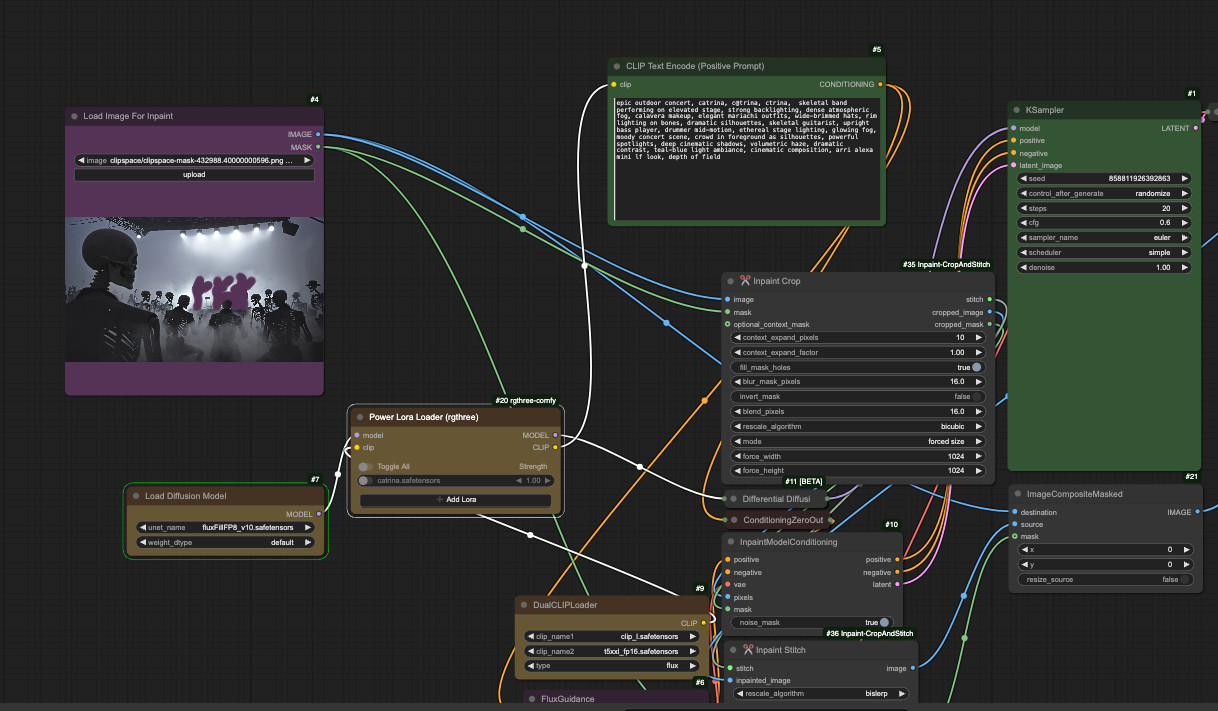
An inversion of the usual pipeline, making way for new-age creatives.
The Production System Behind Nocturna
Rather than a series of AI experiments, this was a deliberate pipeline that was designed, tested, and executed like a real production.
Isaac went far beyond merely using AI tools, instead building a creative system from scratch, treating each step with the same rigor he brings to professional VFX work.
- Storyboard as structure: AI-generated boards became ControlNet anchors, not just concept art. They locked in framing and visual consistency across sequences.

- Style control embedded into the workflow: Instead of relying on style guides or art teams, Isaac embedded visual consistency directly into the generation process. He trained custom LoRA models to lock in tone, character styling, and visual texture, ensuring each output followed a uniform aesthetic across scenes.


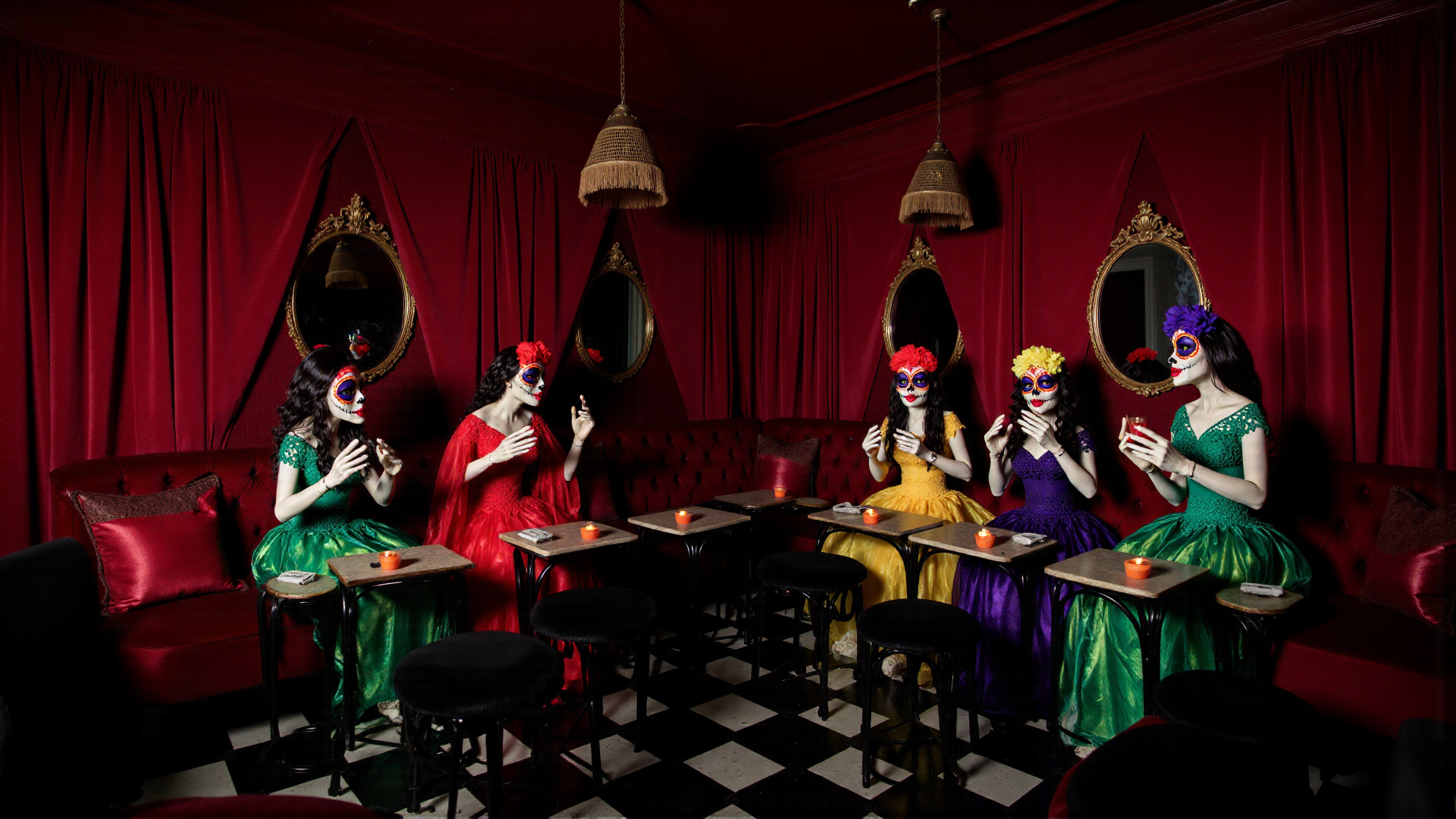
- Custom LoRAs for environments: For the “MC Escher Hotel,” he trained a LoRA on a real hotel in China, reproducing the geometry and lighting with tactile precision.

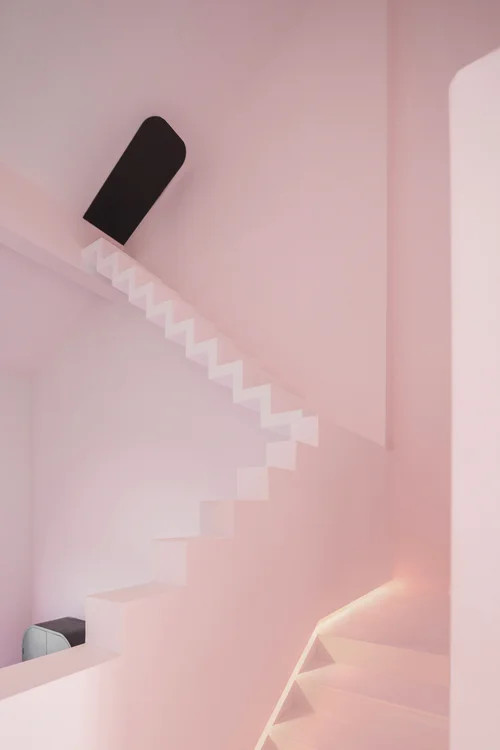

- Character design with custom AI models: Each band member was designed as a stylized Catrina puppet or marionette. Isaac trained individual LoRA models for the characters, allowing him to generate consistent visuals across shots. Their animations were looped to match the rhythm and pacing of the music.
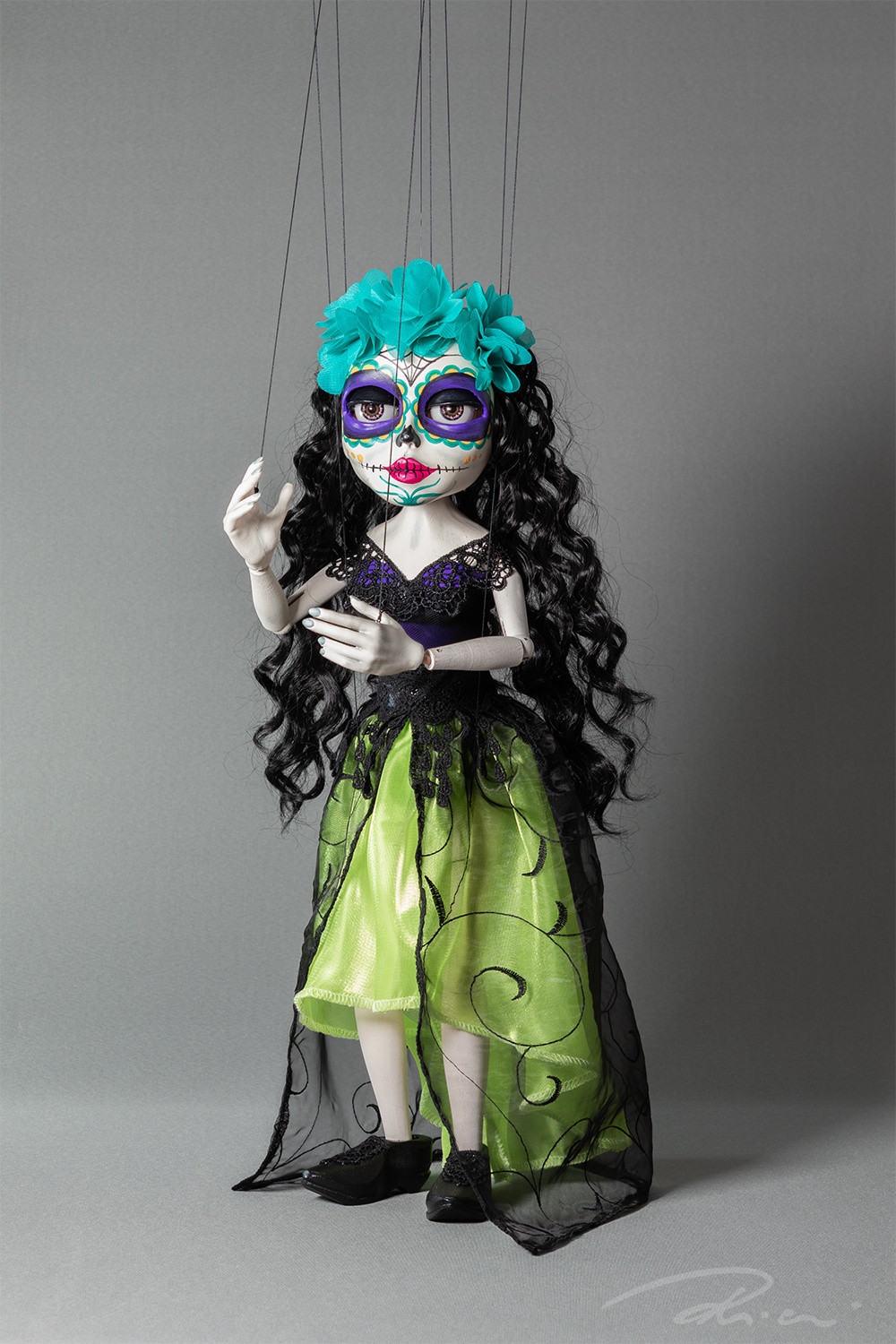


- Batch rendering for velocity: Isaac aspired to a daily goal of five animated shots. ComfyUI’s batch processing enabled fast iteration and selective refinement.
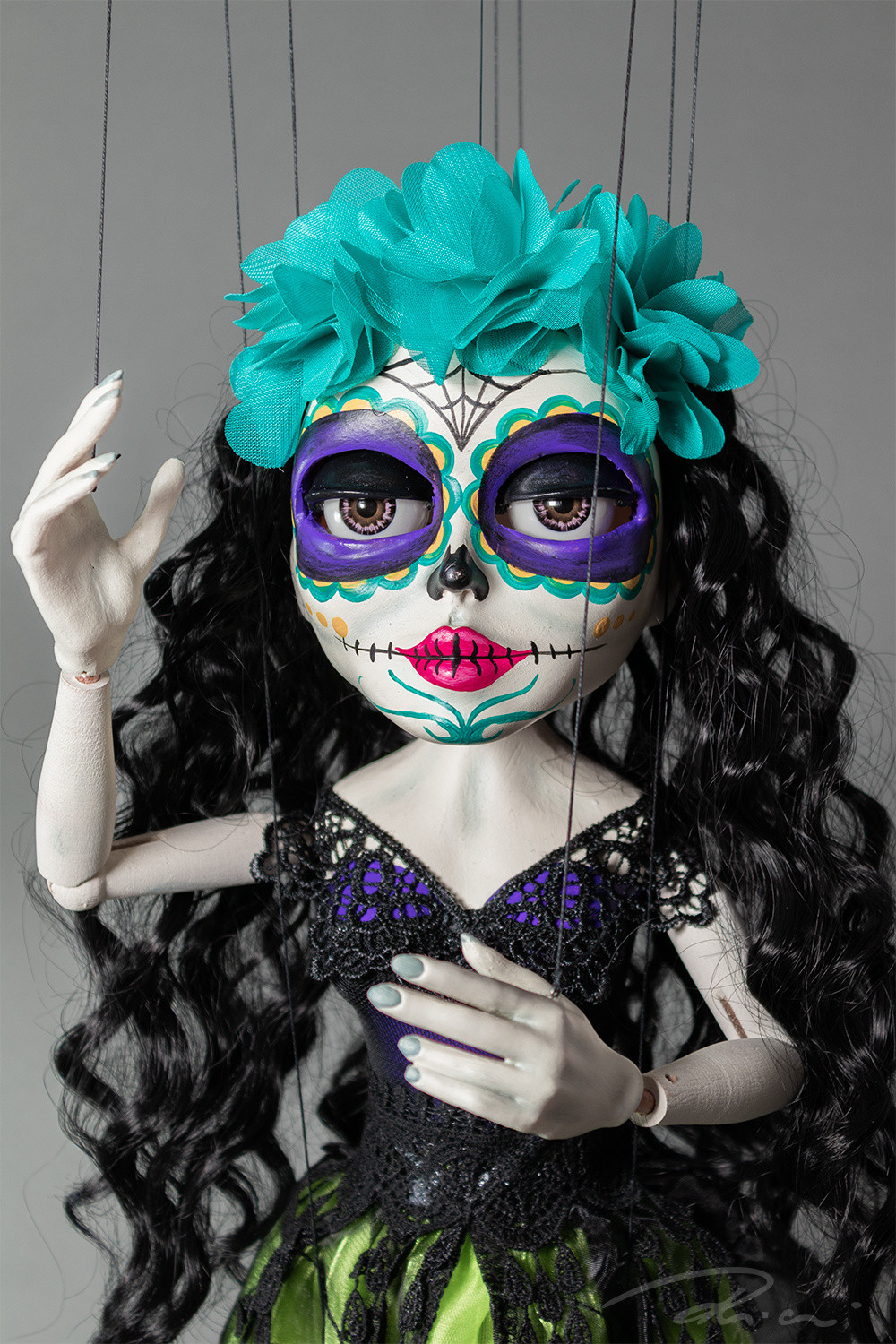
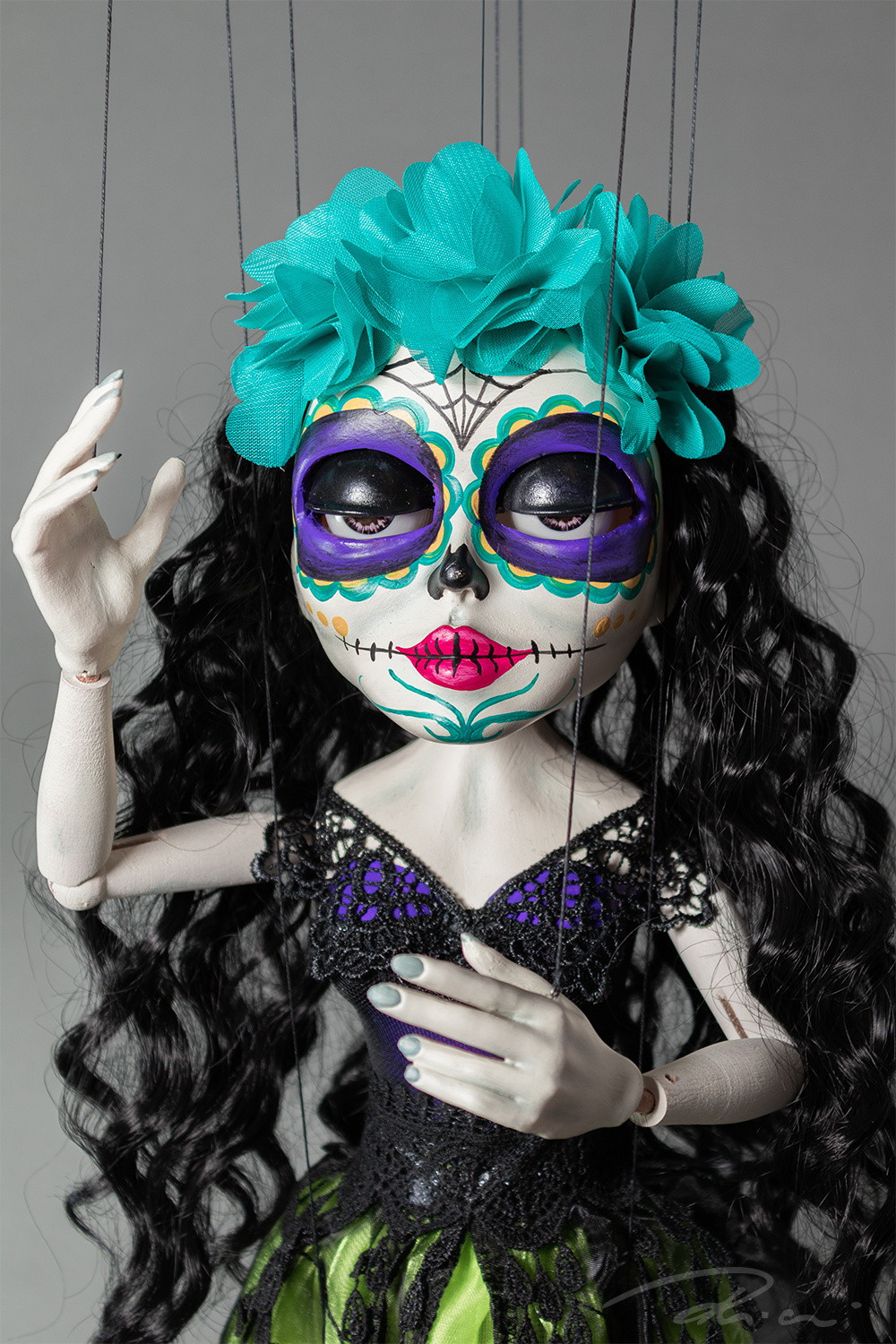
- Creative use of glitches: “AI quirks” weren’t edited out and were used as texture, adding surreal tension between control and accidental perfection.

Artist First, Medium Second
The outstanding factor in Isaac’s process is authorship.
This wasn’t “AI-made” in the dismissive sense.
But it was authored, with each step — from training LoRAs to refining in Photoshop to building story arcs with GPTs — being intentional, even if the result was a “mistake”.
Isaac relied on iteration, often photobashing initial outputs, adjusting them in Photoshop, then re-running them through the generation model using saved seeds and swapped control nets. Final shots were animated in Kling, HailuoAI, and Hedra, with upscaling being handled in Magnific.
This hybrid process (AI-assisted, artist-directed) delivers a result that feels distinct, not because it required less creative work, but because the focus of the work changed. There was no less labor, but rather a redistribution from manual execution to system design, iteration, and visual decision-making.

And that’s why we always speak about creatives using AI to enhance, not replace!
Turning Students’ Dreams into Movie Scenes
Nocturna didn’t emerge from a studio or grant, but was instead built inside our course.
Isaac had enrolled in a 12-week program focused on advanced AI workflows for creative professionals, and the music video was his capstone.
“I wanted to challenge myself to build a full production pipeline with AI,” he said. “What I learned wasn’t just tools, it was process thinking. Given a problem now, I feel like I know how to break it down and build a system around it.”

That shift from telling an ordered story to building scenes like pieces of a system is how AI is changing filmmaking.
Creative direction requires more than masterful aesthetics.
It needs orchestration: structuring inputs, tuning outputs, and finding stability inside noise.
A Music Video Morphs into a Map for the Future
This is a case study in what’s possible when AI workflows are taken seriously.
And make no mistake: Nocturna goes well beyond a single project.
It blends procedural thinking with artistic intent, sidestepping the traditional blockers (budgets, teams, timelines), and replacing them with precision tooling and personal control.
The aesthetics are stylized, and the logic is industrial, with Isaac taking away a lot more than a music video. He now knows how to build the machinery to develop one and make them available, replicable, and open to others.
His custom LoRA for the Escher Hotel is published on Civitai, and his storyboarding process has already informed his next project: a short film for his wife.

The knowledge is portable and the method scales.
Rethinking “Production”
The creative industry tends to divide projects into two categories: real and experimental.
Nocturna challenges that binary by being both.
It was made with intention, technical rigor, and clear aesthetic goals. It plays like a finished piece, but it was also a form of self-education, an experiment in pipeline design, and a test of how far one artist can go with the right mix of tools and vision.
The fact that it works, not as a sketch, but as a film, is a sign of what’s coming next.
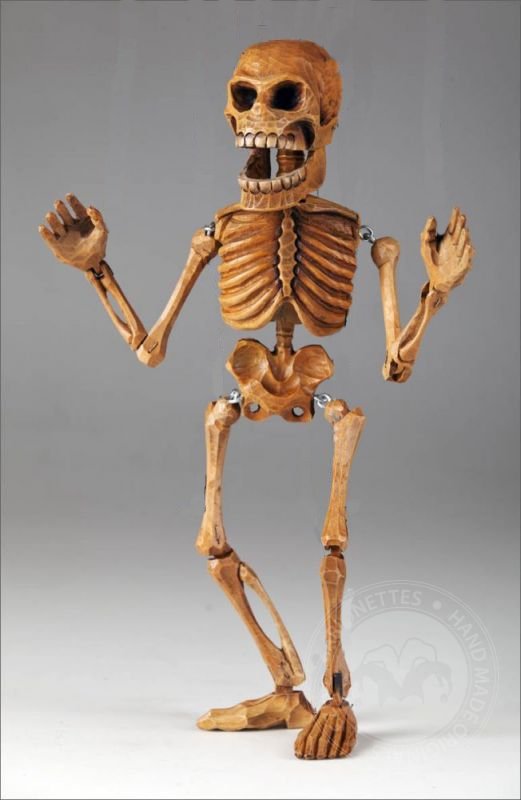
A Learning Experience to Die For
This all started as a student project at Lighthouse AI Academy.
If you’re a creative professional ready to build your own AI production system, from LoRA training to ControlNet workflows to multi-tool animation pipelines, then join us for a complete AI learning journey like no other.
→ Explore the AI for Creative Leaders Course and bring your dreams to life (or death, like Isaac did)
A foundational course for directors, designers, and creative leads who want to think strategically about AI. Learn to plan, prompt, and build workflows that unlock new forms of visual storytelling.
→ Explore the AI for Architects Course and build your wildest creative notions from bare-bone backdrops to fully-fledged
Build a comprehensive AI-powered design pipeline for architecture across all phases, including conceptual design and visualization. Transform your architectural practice with AI tools and workflows designed for the built environment.
→ Explore the Advanced ComfyUI Course and learn to build, automate, and scale AI workflows
A hands-on, deep-dive program for technical creatives ready to master ComfyUI. Learn custom node workflows, animation systems, batch rendering, and ControlNet precision
→ Got questions or need some help? Contact us today.
Get ready to start building your system and owning the process from end to end.
And above all:
Keep creating and always remember to have fun!
